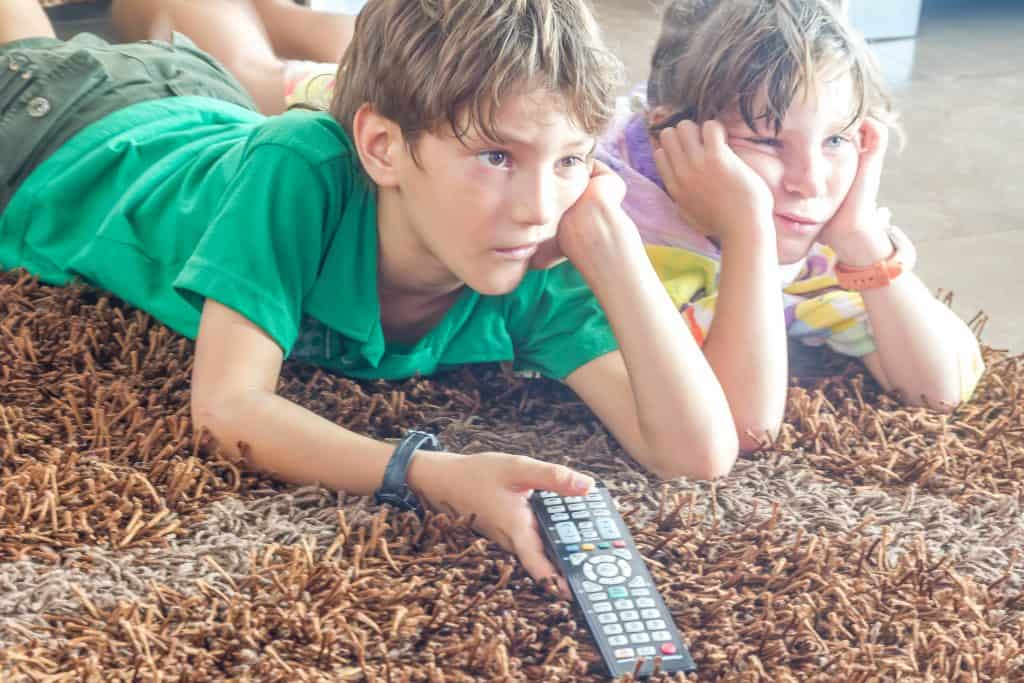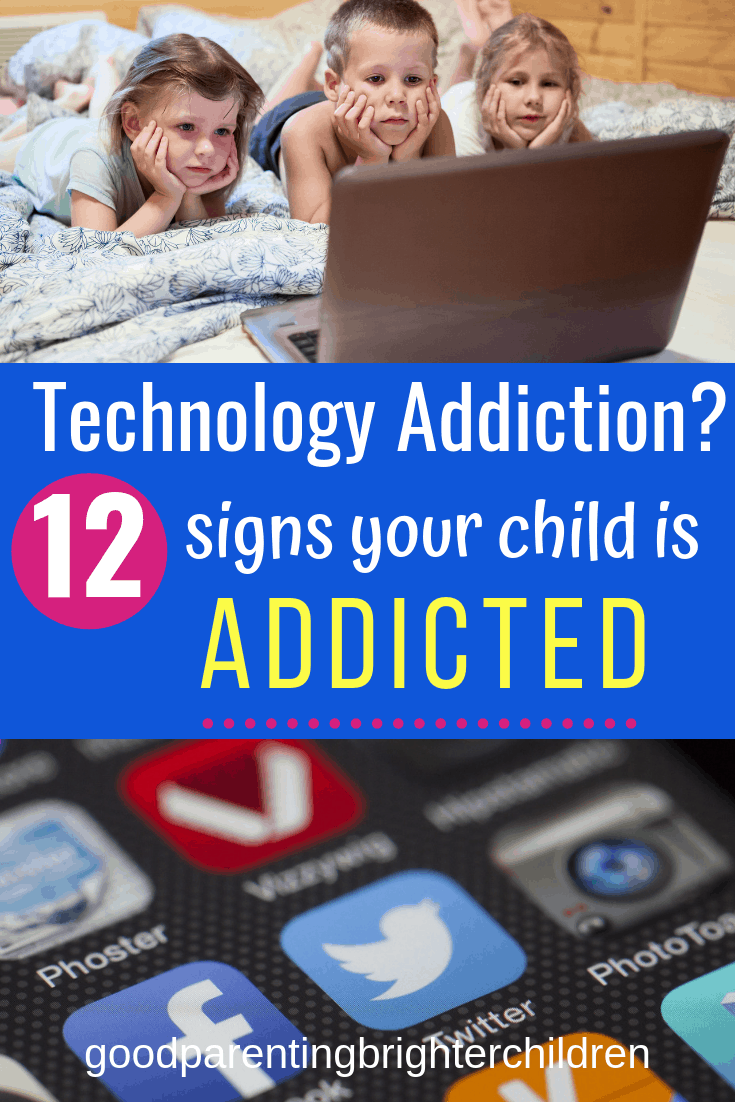Inside: Have you ever calculated the amount of time you spend on tech devices in a week? It may surprise you! Did you know that the overuse of technology can compromise the brain health of you and your children? Science has found that too much technology rewires the brain and can lead to multiple learning and mental health issues. Try out some of these ideas to help you and your children control the amount of time spent on technology.
Technology Addiction: A Real Concern for Parents
This blog is part of my “Tidbits of Wisdom for Parents” YouTube video series. To access the video, click here.
Did you know that Steve Jobs was a “low-tech” parent? Meaning–he did not allow his kids to turn into tech-junkies by spending hours on end playing with tech-toys. He stated, “We limit how much technology our kids use at home.”
Surprising isn’t it?!
I think most of us would assume that one of the greatest tech geniuses of all time would want his kids to have a technology edge and allow them unlimited use.
Not so…
And Steve Jobs is not the only parent who clamps down on his kid’s tech-use. Other tech geniuses like:
- Chris Anderson: C.E.O. of 3D Robotics,
- Alex Constantinople: C.E.O of OutCast Agency,
- Evan Williams: founder of Blogger, Twitter, and Medium
…also limit their children’s use of technology by putting strict rules regarding its’ use.
Why? Is there something they know that we don’t know?
Yes. They understand this very important truth: we live in a 3-dimensional world and technology is a 2-dimensional world. Living consistently in a 2-dimensional world can cause a host of problems with learning, socialization, and emotional and mental health development.

Yes, kids love playing with tech-toys, but it’s a 2-dimensional surface and we live in a 3-dimensional world. The overuse of technology can cause serious learning issues.
Think about this:
Are you a User or Creator?
Steve Jobs was the genius tech-creator, but we are the users. And, there is a big difference between the two. Cultural critic Roland Barthes lamented in the 1970s that the wooden block’s children used to play with were in decline, and it was sad because now children were taught to be users, not creators.
If we are teaching our children to be users rather than creators, the consequences will be far-reaching.
Let me be clear on one point: I’m not against technology. Not, at all. To me, technology is neither good nor bad—its value is predicated on how it is used. In many respects, it is an amazing tool; provides a wealth of easily-accessible information; allows for the storage of information; a tool that provides quick communication with people, and has the ability to keep us in touch with long-distant family and friends.
But its’ overuse can cause addiction, significant learning issues, and dehumanize us.
Like everything in life, it needs controls. I guess Shakespeare knew what he was talking about when he said: “Moderation in all things…”
Studies show that the overuse of technology literally changes brain circuitry and can contribute to (and perhaps cause) many serious disorders.
Here are 12 reasons why you need to monitor your child’s tech-use
Technology Addiction? Look for these signs:
- Obsessive-compulsive disorder
- ADD/ADHD attention-deficit disorder (focusing, attention to tasks, etc). There is a 43% increase in this disorder in kids using tech devices
- Visual Perception (see explanation below)
- Addictions
- Obesity
- Sleep disorders
- Body dysmorphic disorder (how children view their bodies—most video games portray Barbie-like and He-Man-like unrealistic body types)
- Mood disorders: Depression, Mania, etc.: 1 in 5 children now have mental health issues because of the overuse of technology, 37% increase in teen depression and 200% increase in suicide (kids ages 10-14)
- Inability to Socialize (see explanation below)
- Loss of empathy—especially with video-game addiction which can cause desensitization and emotional distance
- Speech and language delays; particularly for children ages 6 months to 2 years old who are exposed to technology such as ipads, video games, smartphones or tablets. Studies found a 49% increased risk of speech delays with children using these devices.
- Altering the wiring of the brain that leads to a short attention span and memory loss
Many of these statistics come from the books below and from recent news reports.
Let me explain the seriousness of some of the issues listed.
Visual Perception:
Visual perception is vital to learning. Without visual perception children cannot accurately learn to read, give or understand directions, copy from a blackboard, have good hand-eye coordination, or integrate visual information with other senses
Dr. John H. Lienhard, professor emeritus, University of Houston has written and lectured about technology, learning disabilities, and visual perception. According to Lienhard, the overuse of technology causes:
- visual perception and spatial visualization issues
- memory problems
- fragmented learning
- divorces knowledge from its appropriate context
Lienhard points out that rather than a child mentally working through three-dimensional problems, they see only the results on a two-dimensional screen. As we lose our ability to think three-dimensionally, we will also compromise our abilities to visually perceive the visual world, which is vitally important to learning.

Children who are constantly in front of 2-dimensional screens can have serious issues with visual perception which is tied to all of our learning
Socialization:
Social media is anything but social. Technology has made it possible for young people to communicate with each other in fast, easy, and convenient ways—Facebook, Twitter, texting, emails, Instagram, etc—but all of these are accomplished in isolation. They connect to thousands of “friends” without having to face a single one of them.
Kids need to socialize with others. It’s considered an intelligence and some psychologists believe it is more important than academic intelligence.
Technology Addiction: Help Your Kids Monitor Their Tech-Use
Parents—please help your kids control the amount of time they spend on television, Facebook, playing video games, surfing the Internet, and cell phones, etc. Pediatricians suggest no more than 45 minutes-1 hour per day on these devices. They also recommend that a child under the age of two should be nowhere near technology.

Help your kids control the amount of time they spend on tech-toys. The overuse of technology can cause serious learning issues
We got our first computer in 1982. It was easier back then to control because there was no Internet, no cell phones, and rather boring video games. Our first three sons were not that interested in the computer, but our last son loved tech toys and would have spent his entire life playing video games if we didn’t have some rules in place.
Here are some things we did to help our kids control their technology use:
Technology Addiction: Successful Strategies for Monitoring Tech Toys
Strategy #1: Charts
Create a chart or purchase a calendar where you can daily record how much time each person in the family is spending on technology. It may surprise everyone just how much time is wasted on these two-dimensional screens. After a month of careful charting, sit down with your family and discuss ways you can limit its use and what activities you can do instead.
Parents: it’s important that you do this exercise with your kids. It will give you an opportunity to evaluate how much time YOU spend “plugged in.” What kind of tech role model are YOU? And are your children mirroring YOUR tech-use behavior?
Charts Lead to Self-Monitoring
One of the goals for monitoring technology is to teach your child about being responsible for what he chooses to do with his time. And hopefully, over time, to choose activities that will enhance his life rather than be time-wasters.
Strategy #2: Equal Time Practicing/Playing and Tech-Use
For every minute our sons spent on a tech device, they had to spend an equal amount of time practicing their musical instruments. Example:
10 minutes playing video games = 10 minutes practicing the piano
15 minutes watching TV = 15 minutes practicing the piano, etc.
The result: over time our boys learned to self-monitor the time they spent on technology. It freed me from being the policeman and taught them responsibility in how they chose to spend their time. Surprisingly, this technique actually worked in that they did not want to spend hours practicing the piano…hence they carefully chose how much time they spent on tech devices.
Your child doesn’t play a musical instrument? No worries–use this same strategy with sports, outdoor play, board games, or playing with friends.

One strategy that worked with our kids to control the amount of time they spent on technology was: for every 5 minutes they played a video game, they had to spend an equal amount of time practicing their musical instruments
Strategy #3: Co-Viewing
When your child (up to age 12) is on the computer, sit with him/her and monitor what he/she is seeing. It’s called “co-viewing.”
“Co-viewing” is important because it allows you to talk to your child about the advertisements, the videos, and the images they are seeing. You want to be your child’s first teacher–not the Internet.
It also gives you the opportunity to teach your child about making good choices on what she will and will not spend time watching. There is valuable information on the Internet. If you help your child make good viewing choices when they are young, there is a strong possibility they will continue making wise choices as an adult.
Strategy #4: Rescue Time or Dumping the Tech Toys
The program, RescueTime may help your child. It’s time management software that can help him/her be aware of how much time they are spending on Facebook, the Internet, video games, etc., and if they are being distracted and wasting time. However, if this doesn’t work–I would suggest dumping the tech toys in favor of other activities that actually build the brain.
If you are putting the brakes on tech-use with your kids, there will be a “time hole” and someone or something (or both) is going to need to help her/him fill that hole. There are tons of things your kids can do instead of being “plugged-in,” but they may need you to guide them–especially in the beginning.
It’s not easy to limit your child’s tech-use, but it will reap big rewards.
Your child will:
- think better
- have a longer attention span
- and do better in school and in life
Books to Help With Technology Addiction
Here are three books that I highly recommend that will give you the data and statistics of what a pervasive problem technology addiction is:
iGen by Jean Twenge, PhD
iDisorder by Larry Rosen PhD
The Shallows: What the Internet is Doing to Our Brains by Nicholas Carr
Don’t waste another minute. Start today and take stock of how much time everyone in the family spends on technology. You may be shocked…but you are on the cusp of helping your child with something extraordinarily important.
Question: do you have challenges with your children being on their tech toys too much? How do you monitor tech-use? Do any particular strategies work? Please share in the comment section below.
For ideas and activities for filling the “time-hole,” that is created when you monitor your kids’ technology use: “Effects of Technology: Try these 14 Amazing Brain Builders Instead”
You can access the 2-minute video here.
Want to remember this post? Post, “Warning: How to Keep Your Kids from Technology Addition,” to your favorite Pinterest Board!








I agree that technology addiction in children is definitely not something to overlook. Creating a technology use contract with your kids is a great way to prevent them from overusing their devices.
Totally agree! The next step, as you know, is making certain the kids keep to that agreement. Thanks for sharing!
This article is exactly what every parent needs to read. It isn’t about extremes, or completely eliminating technology. It’s about moderation like everything else. Too much of anything isn’t a good thing. There are many amazing things that technology has brought into our lives. However, it comes with a price.
I especially loved the point about creator or users. Limiting screen time, even if it seems educational, and encouraging our children to use their imaginations and play is something that every parent should be doing more of.
Karrie–thank you so much for your comments and insights. And I agree–technology is an amazing tool that we all love and enjoy. However, as you pointed out–it needs controls before it controls us. Thanks for sharing!
This article really hits home for me. The last two years I was a Digital Media Specialist at the middle school level. Our school, along with about 5 others, went completely digital. As of now, every High School in my distrtict is digital with all middle schools becoming digital by next year. They even have some elementary schools that are all digital which still shocks me. We are in a big county here in Florida and our Superintendent wants us to be cutting edge and ahead of the game. As both a teacher and a parent, I see the pros and cons of doing this. Prior to leaving my job last year I started feeling like the cons were very much outweighing the pros. My son is struggling with the adjustment of all digital as a high schooler. He has a hard time reading his textbooks online and misses the ability to highlight and annotate in the margins. My worry is that they are on the computers all day at school and then come home and use technology for entertainment as well. It never stops. Thank you for the suggestions on cutting back the technology use and I look forward to implementing some of them 🙂
You are absolutely right about schools and technology, Tiffany. I was hired as a consultant by an elementary school that wanted to implement a larger music program with allocated funds. Then a father came up and said that he would pay for a computer lab if they took the music funds and put it towards technology. So, guess who won? Yes, they got their fancy computer lab and after a year, learning challenges went up at the school, not down. These uninformed people look at technology as the panacea for education but never get to the root of the problem. One in four kids today have some kind of learning issue–I blame the overuse of technology on a lot of it. The two things that help kids to learn are music and movement…and what are the first two things schools eliminate from the curriculum? Music and Physical Education. Once again, Tiffany–thank you for your insights! You are a great mom!!